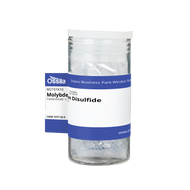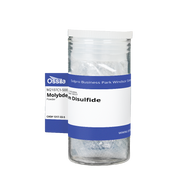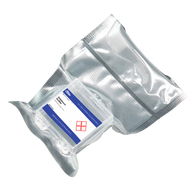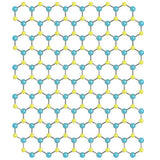Molybdenum Disulfide (MoS2)
Molybdenum disulfide (MoS2) is an inorganic compound classified as a transition metal dichalcogenide (TMDC). MoS2 materials show promising electronic and quantum characteristics. Their two-dimensional (2D) ultrathin structures have a direct bandgap, unlike their bulk counterparts.
Molybdenum disulfide is the most famous of the single layer transition metal dichalcogenide (TMD) family. MoS2 has been used in bulk for many years as a solid state lubricant, this is due to its low coefficient of friction in addition to its high chemical and thermal stability. Similar to graphite, when MoS2 transitions from a bulk structure to a single layer structure the properties of this material undergo a significant change.
The most striking change that occurs when transitioning from bulk to single layer is the shift in the optoelectronic properties, with the material changing from being an indirect bandgap semiconductor with a bandgap value of approximately 1.3 eV to a direct bandgap semiconductor with a bandgap value of approximately 1.9 eV. Due to the presence of a bandgap in this material there are significantly more uses for MoS2 in comparison to other 2D materials such as graphene.
Browse Molybdenum Disulfide
Related categories: low dimensional materials, 2D materials
Filter by form:
Applications
Atomic layers of molybdenum disulfide exhibit high carrier mobility and optical transparency, making it a promising alternative for graphene in optoelectronic applications.
Some areas in which MoS2 has already been applied include high on/off ratio field effect transistors due to low leakage currents, memresistors based on layered TMD films, controllable spin and valley polarization, geometric confinement of excitons, tuneable photoluminescence, the electrolysis of water, and photovoltaics/photodetectors.
Molybdenum disulfide is also used as a dry lubricant, photocatalysts for hydrogen revolution reactions, electrode material for lithium and sodium batteries, energy conversion and storage material, photodetectors, and sensors.




